
Wehrtechnische Studiensammlung Koblenz: A Journey Through Military Technology
Explore the evolution of military technology from the 19th century to the present day at the Wehrtechnische Studiensammlung Koblenz, featuring armored vehicles, artillery, and more.
The Wehrtechnische Studiensammlung Koblenz (WTS), or Military Technology Collection Koblenz, is a captivating museum showcasing the evolution of military technology from the 19th century to the present day. Located in Koblenz, Germany, the museum boasts an extensive collection of armored vehicles, artillery, firearms, and communication devices. Visitors can explore the advancements in weaponry, observe the changes in military equipment design, and gain insights into the impact of technology on warfare. The museum provides a comprehensive overview of German military engineering achievements, offering a unique perspective on the country's military history. With interactive exhibits and detailed displays, the WTS appeals to both military enthusiasts and those interested in the history of technology, making it a worthwhile destination for anyone visiting the Koblenz region.
A brief summary to Wehrtechnische Studiensammlung Koblenz
- Mayener Str. 85, Koblenz, 56070, DE
- +492619836921423
- Visit website
Local tips
- Allow at least 3-4 hours to fully explore the extensive collection; there's a lot to see.
- Consider joining a guided tour for deeper insights into the exhibits and historical context.
- Wear comfortable shoes, as you'll be doing a lot of walking.
Getting There
-
Public Transport
From Koblenz Hauptbahnhof (main train station), take bus line 8 towards Arenberg/Immendorf. Get off at the 'Technisches Zentrum' stop, which is directly in front of the museum. The bus ride takes approximately 20-25 minutes. A single ticket costs around €3.00.
-
Taxi/Ride-Share
A taxi or ride-share from Koblenz Hauptbahnhof to the museum takes approximately 15-20 minutes, depending on traffic. The estimated fare is between €15-€20.
-
Driving
From the city center of Koblenz, follow B49 (Mayener Straße) in the direction of Mayen. The museum is located directly on Mayener Straße. Ample free parking is available on-site.
Discover more about Wehrtechnische Studiensammlung Koblenz
Iconic landmarks you can’t miss
The Koblenz house of eternity Beth ha Kwaroth das Haus der Ewigkeit
0.8 km
Reflect on Koblenz's Jewish heritage at the House of Eternity, a serene cemetery offering a poignant glimpse into the community's history, traditions, and resilience through the Holocaust.

Portal des ehemaligen Dominikanerklosters
1.0 km
Discover the Portal of the Former Dominican Monastery in Koblenz: A historical gateway offering a glimpse into the city's rich past and the legacy of the Dominican order.

Stadtarchiv Koblenz
1.0 km
Delve into Koblenz's past at the City Archive, housed in the historic Alte Burg, offering a wealth of documents, maps, and photographs for researchers and history enthusiasts.

Münzpl.
1.1 km
Discover Münzplatz in Koblenz: where history comes alive in a vibrant square, surrounded by Baroque architecture, charming alleyways, and the echoes of electoral coinage.

Brunnen zur Stadtentwicklung, Koblenz - Willi Heinzen (1992)
1.1 km
A modern fountain on historic Münzplatz, symbolizing Koblenz's rich history and ongoing evolution, surrounded by Altstadt charm and vibrant city life.
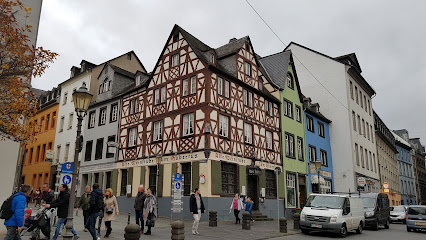
Altstadt Koblenz
1.1 km
Explore the historic heart of Koblenz, where Roman roots meet medieval charm at the confluence of the Rhine and Moselle, offering a captivating journey through time.
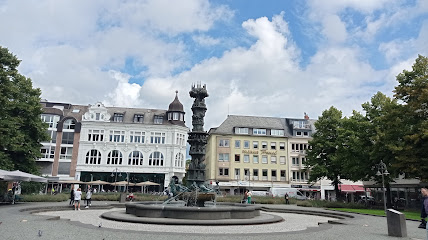
Familienbrunnen (Brunnen der Generationen), Koblenz - Rudi Scheuermann (1980)
1.2 km
Discover Koblenz's captivating history etched in stone at the Familienbrunnen, a generational fountain narrating the city's evolution from Roman times to the present day, nestled near the iconic Liebfrauenkirche.
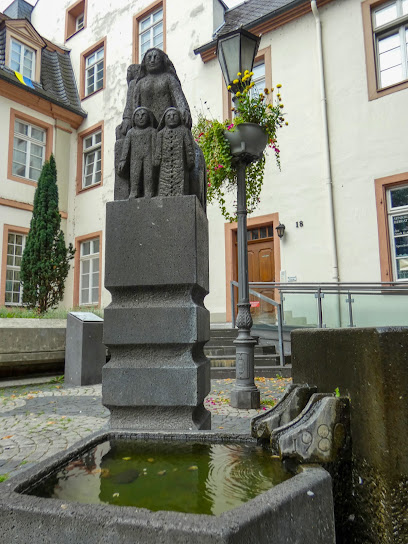
Barmherzige Brüder von Maria-Hilf - Peter Friedhofen Haus
1.2 km
Discover a serene sanctuary in Koblenz's Old Town at the Peter Friedhofen Haus, a historic monastery offering tranquility, reflection, and a glimpse into the Barmherzige Brüder's enduring legacy.

Erfinderbrunnen, Koblenz - Prof. Gernot Rumpf (1983)
1.3 km
Discover the Erfinderbrunnen in Koblenz, a whimsical fountain celebrating regional inventors with playful sculptures and dynamic water features in the heart of the city's bustling Fischelpassage.

Jesuitenpl.
1.3 km
Discover Jesuitenplatz in Koblenz: A historic square where the echoes of the Jesuit order resonate through stunning architecture and a vibrant cultural atmosphere in the heart of the Old Town.

Peter-Altmeier-Denkmal
1.3 km
Honoring Peter Altmeier, the influential Minister-President of Rhineland-Palatinate, this monument symbolizes regional unity and post-war reconciliation near Deutsches Eck in Koblenz.

Richter spielgeräte GmbH
1.4 km
Explore the innovative world of playground design at Richter spielgeräte GmbH, a unique tourist attraction in the charming Altstadt of Koblenz.

Josef-Görres-Platz
1.5 km
Experience the vibrant heart of Koblenz at Josef-Görres-Platz: a historic square where culture, architecture, and local life intertwine, offering an unforgettable glimpse into the city's soul.
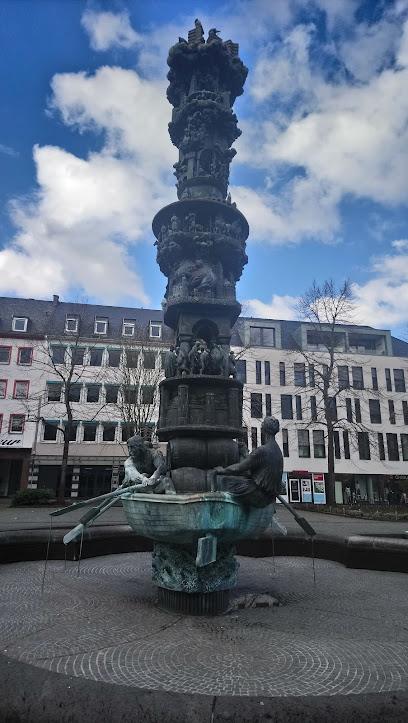
Koblenz-Goldgrube
1.5 km
Discover the tranquility of Koblenz-Goldgrube, a picturesque garden perfect for relaxation and nature appreciation in the heart of Koblenz, Germany.

Denkmal der deutschen Einheit
1.5 km
Witness the confluence of history and rivers at the Denkmal der Deutschen Einheit in Koblenz, a powerful symbol of German unity and resilience at the Deutsches Eck.

Unmissable attractions to see
H Balduinbrücke
0.7 km
Explore H Balduinbrücke in Koblenz, a stunning bridge offering captivating views of the Rhine River and a glimpse into the region's rich history.

Ort der Kinderrechte / Schiff
0.7 km
Explore Ort der Kinderrechte in Koblenz, a unique tourist attraction dedicated to celebrating and advocating for children's rights worldwide.

Bubenheimer Flesche
0.8 km
Explore Bubenheimer Flesche, a captivating historical landmark in Koblenz, offering stunning views and rich cultural heritage amidst nature's beauty.
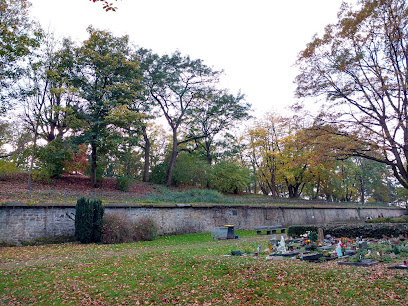
Baldwin Bridge, Koblenz
0.8 km
Discover the enchanting Baldwin Bridge in Koblenz, where history meets stunning views over the Moselle River, perfect for every traveler.

Springbrunnen, Koblenz - Tiefgarten Alte Burg
1.0 km
Experience the tranquil beauty of Springbrunnen in Koblenz, a historic fountain nestled in the lush gardens of Tiefgarten Alte Burg.

Leben und Zeit Mural
1.0 km
Explore the Leben und Zeit Mural in Koblenz – a vibrant blend of art and history reflecting the essence of time and life.
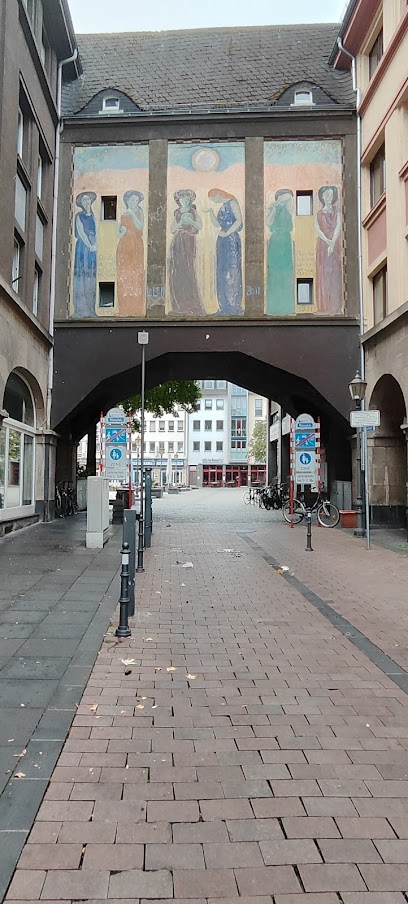
Münzplatz
1.1 km
Experience the historical charm of Münzplatz, a vibrant town square in Koblenz, Germany, surrounded by culture, markets, and stunning architecture.

Florinskirche
1.1 km
Explore the stunning Florinskirche in Koblenz, a remarkable Evangelical church showcasing rich history and breathtaking architecture in a vibrant market square.

Turmuhr und Augenroller
1.1 km
Explore the historic Turmuhr und Augenroller in Koblenz, a charming clock tower that encapsulates the city's rich culture and heritage.

Altes Kaufhaus
1.1 km
Explore the rich history and culture of Koblenz at Altes Kaufhaus, a must-visit museum that connects the past with the present.
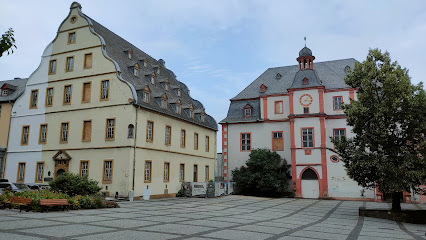
Denkmalzone „Vier Türme“
1.2 km
Discover the historical charm of Denkmalzone „Vier Türme“, a serene memorial park in Koblenz featuring iconic towers and beautiful gardens.

4 Towers (Oriel Windows)
1.2 km
Explore the stunning 4 Towers in Koblenz, an architectural marvel showcasing the city’s rich history and unique styles.
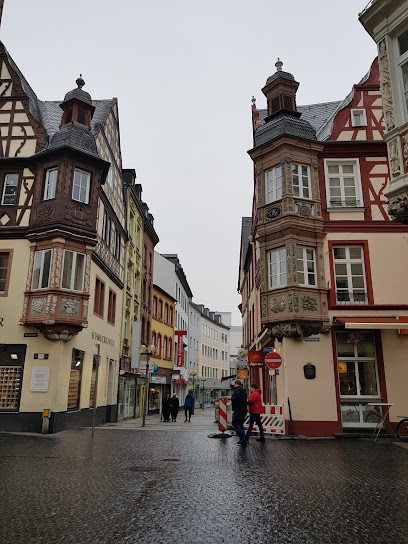
Denkmal- Engel der Kulturen
1.2 km
Explore the Engel der Kulturen in Koblenz, a stunning monument that celebrates cultural harmony and invites reflection amidst scenic beauty.
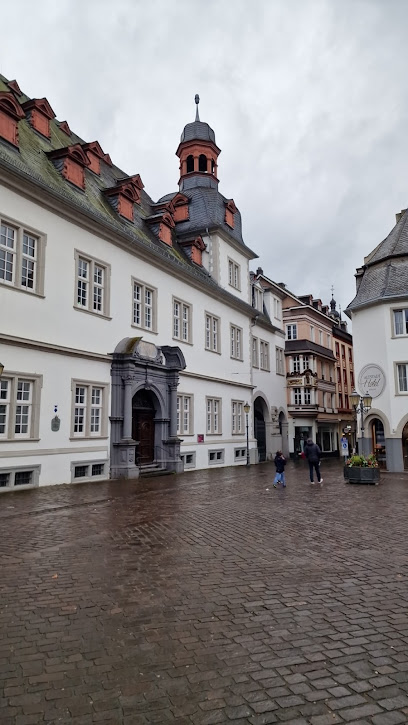
Liebfrauenkirche (Church of Our Lady)
1.2 km
Discover the architectural grandeur and historical significance of Liebfrauenkirche in Koblenz, a must-see for every traveler.

Brunnen
1.2 km
Explore the enchanting Brunnen in Koblenz, a stunning fountain surrounded by historic charm and vibrant local culture.

Essential places to dine
Restaurant OM
0.9 km
Discover authentic Indian cuisine at Restaurant OM in Koblenz—offering vegan and vegetarian delights in a warm and inviting setting.
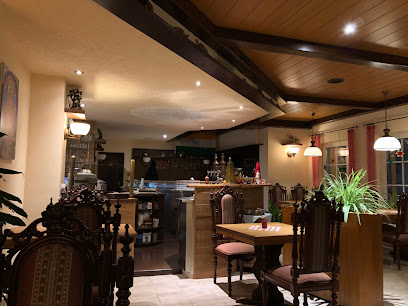
TAQUITOS Cantina Y Bar
1.0 km
Discover authentic Mexican cuisine and vibrant nightlife at TAQUITOS Cantina Y Bar in Koblenz - where every meal is a celebration!
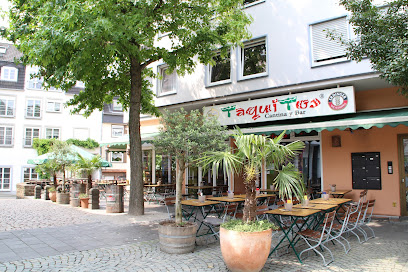
Osteria Novecento
1.1 km
Savor the essence of Italy at Osteria Novecento - where authentic cuisine meets warm hospitality in Koblenz.

Drei Hefen
1.1 km
Discover exquisite pizzas and fine wines at Drei Hefen in Koblenz - a must-visit culinary haven for food lovers.

Restaurant Taj Mahal
1.1 km
Experience authentic Indian and Pakistani cuisine at Restaurant Taj Mahal in Koblenz - where every dish tells a story.
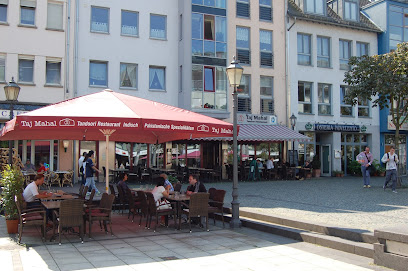
Restaurant Hanoi
1.1 km
Discover authentic Vietnamese cuisine at Restaurant Hanoi in Koblenz - where every dish tells a story.
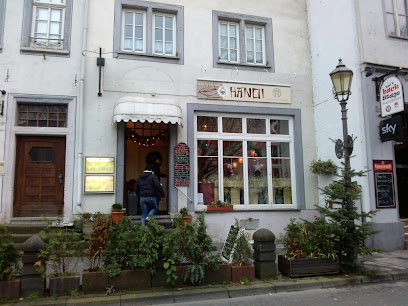
SauBar / Koblenz
1.1 km
Experience the heart of Germany at SauBar in Koblenz – where authentic flavors meet warm hospitality.
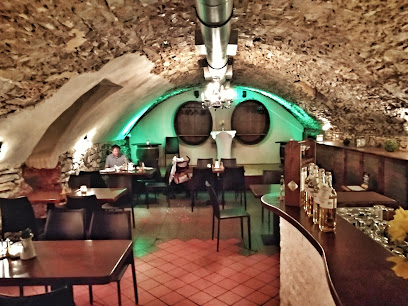
Weinhaus Hubertus
1.1 km
Discover authentic German cuisine and fine wines at Weinhaus Hubertus in Koblenz - a true gem for food lovers.
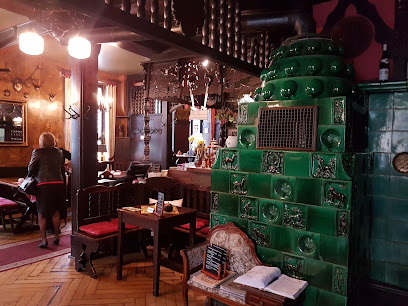
Trattoria da Raffaele
1.1 km
Experience authentic Italian flavors at Trattoria da Raffaele in Koblenz – where every meal is a celebration of Italian cuisine.

Restaurante/Bistro Dormonts
1.1 km
Experience exquisite local flavors at Restaurante/Bistro Dormonts in Koblenz - where every meal is a celebration of culinary artistry.
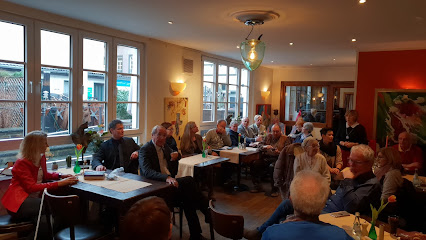
Los Gauchos
1.2 km
Experience the essence of Argentine grilling at Los Gauchos in Koblenz – where every bite tells a delicious story.
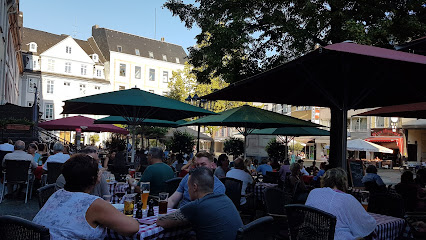
Café Bistro Pfefferminzje
1.2 km
Discover Café Bistro Pfefferminzje in Koblenz: A cozy bistro offering delightful breakfasts and exquisite coffee in a charming atmosphere.
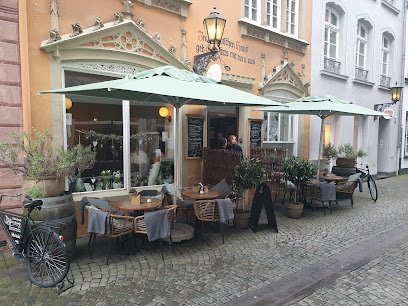
Restaurant Tanoor
1.2 km
Discover authentic Persian flavors at Restaurant Tanoor in Koblenz – where every dish is crafted with love and tradition.

Maximilians Altes Kaufhaus
1.2 km
Discover authentic German flavors at Maximilians Altes Kaufhaus in Koblenz - a must-visit destination for food lovers exploring this historic city.
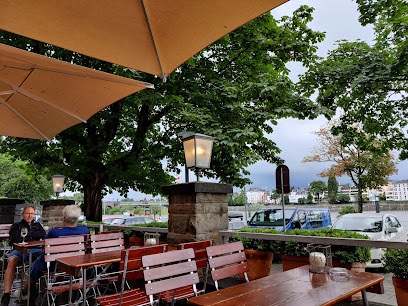
Gretchens Restaurant Koblenz Altstadt - Koblenz
1.2 km
Experience authentic German cuisine at Gretchens Restaurant in Koblenz's historic Altstadt, where every dish tells a story.
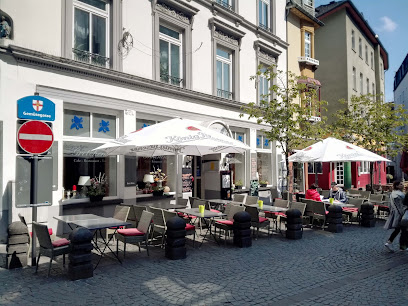
Markets, malls and hidden boutiques
Iris Woldenga
1.1 km
Explore Iris Woldenga, a vintage women's clothing haven in Koblenz, offering unique fashion and an inviting atmosphere for all visitors.

Kunstgässchen Koblenz
1.1 km
Explore Kunstgässchen Koblenz: A vibrant shopping mall offering unique boutiques, local art, and delicious dining experiences in the heart of Koblenz.

You fashion
1.1 km
Discover fashion trends and unique styles at You Fashion, Koblenz's premier shopping mall, perfect for every fashion enthusiast.
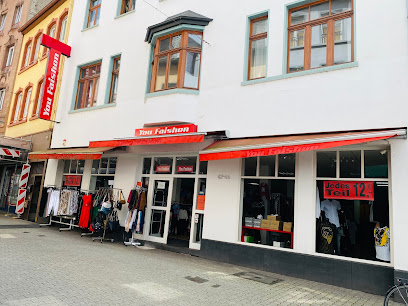
Bazaar of Wunderbar
1.1 km
Discover unique gifts and local treasures at the Bazaar of Wunderbar in Koblenz, where shopping meets cultural exploration.
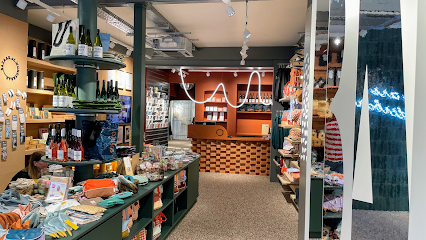
World - luxury fashion store
1.2 km
Explore luxury fashion at World in Koblenz, where style meets sophistication in an exquisite shopping experience.
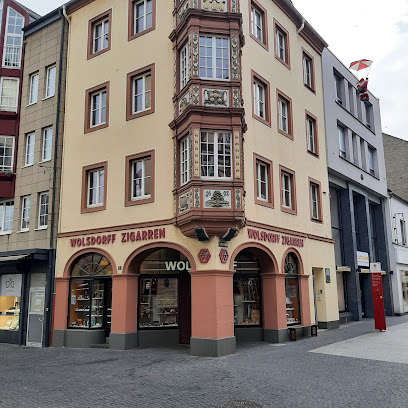
Zweite Liebe - Fashion Outlet Boutique
1.2 km
Explore Zweite Liebe in Koblenz for unique fashion finds and unbeatable deals in a charming boutique setting.

Tom Tailor
1.2 km
Discover fashionable clothing for men and women at Tom Tailor in Koblenz, where style meets comfort and quality.

Vanezia Concept Store
1.2 km
Explore unique fashion finds in Koblenz at Vanezia Concept Store, where style and creativity converge for a delightful shopping experience.

NOA NOA KOBLENZ
1.2 km
Explore NOA NOA in Koblenz for stylish women's clothing that blends modern trends with timeless elegance, perfect for every occasion.

PIMKIE
1.2 km
Explore PIMKIE in Koblenz for stylish women's clothing and accessories that blend trendy designs with affordability, perfect for every fashionista.

JACK & JONES
1.2 km
Explore the stylish offerings at JACK & JONES in Koblenz, a top destination for men's fashion with a range of jeans, outerwear, and accessories.

The Body Shop
1.2 km
Explore ethical beauty at The Body Shop in Koblenz, where natural skincare meets sustainable shopping for the conscious traveler.

ETERNA
1.2 km
Explore ETERNA in Koblenz for stylish clothing and accessories that embody quality and elegance in the heart of the city.

Marc O'Polo
1.2 km
Discover contemporary fashion at Marc O'Polo, a stylish clothing store in Koblenz offering premium men's and women's apparel for every occasion.

Esprit Store Koblenz
1.2 km
Explore the stylish offerings at Esprit Store Koblenz within the vibrant Forum Mittelrhein, where modern fashion meets quality and comfort.

Essential bars & hidden hideouts
Spökes
1.0 km
Experience the vibrant nightlife of Koblenz at Spökes, where delicious cocktails and a lively atmosphere await every visitor.
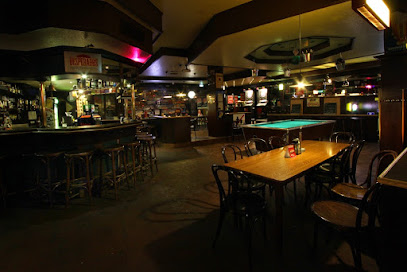
EXCALIBUR - The Rock Cafe
1.0 km
Discover the vibrant nightlife at EXCALIBUR - The Rock Cafe, a unique blend of cocktails and rock music in the heart of Koblenz.

NEULAND - Koblenz
1.0 km
Experience the vibrant nightlife of Koblenz at NEULAND, a stylish bar offering a diverse drink menu and a lively atmosphere.

Irish Pub Koblenz
1.0 km
Discover the heart of Ireland at Irish Pub Koblenz, where great food, drinks, and live entertainment await in a cozy setting.

Shotz Koblenz
1.0 km
Discover the lively atmosphere and diverse drink selection at Shotz Koblenz, a must-visit bar in the heart of Germany's charming Altstadt.

Druckluftkammer
1.0 km
Experience the vibrant nightlife at Druckluftkammer in Koblenz, where cocktails and dancing meet a lively atmosphere for an unforgettable evening.
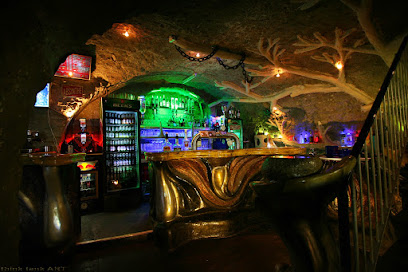
Aktuell Bar
1.1 km
Discover the vibrant nightlife of Koblenz at Aktuell Bar, where live music, cocktails, and a welcoming atmosphere await.

Zeitlos
1.1 km
Experience the vibrant nightlife of Koblenz at Zeitlos, a lively bar offering an extensive drink menu and a welcoming atmosphere for all.

Sugar Ray’s Koblenz
1.1 km
Discover the lively atmosphere and diverse drink selection at Sugar Ray’s Koblenz, a bar where locals and visitors mingle over great cocktails and good vibes.

BackStage Koblenz
1.1 km
Discover the energetic nightlife of BackStage Koblenz, a lively bar and pub perfect for socializing and enjoying local drinks.

Kurioos - Koblenz
1.1 km
Discover the lively nightlife at Kurioos - Koblenz, where creative cocktails and a vibrant atmosphere come together for an unforgettable experience.
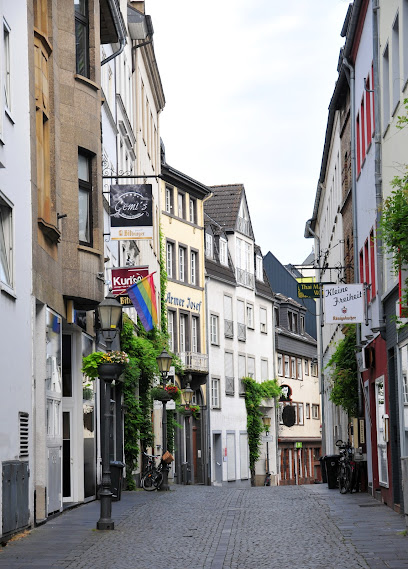
Gecko Lounge
1.1 km
Discover the vibrant nightlife of Koblenz at Gecko Lounge, where delightful drinks and a lively atmosphere await.

M's GASTWERKoblenz
1.1 km
Discover M's GASTWERKoblenz, a charming lounge offering exquisite cocktails and wines in a cozy atmosphere, perfect for unwinding after a day of exploration.

Café Bar My Way
1.2 km
Discover the perfect blend of relaxation and excitement at Café Bar My Way, Koblenz's favorite spot for coffee, cocktails, and light bites.

Atlas Bar - Koblenz
1.2 km
Discover the vibrant atmosphere of Atlas Bar in Koblenz, where relaxation meets socializing in a charming setting.




